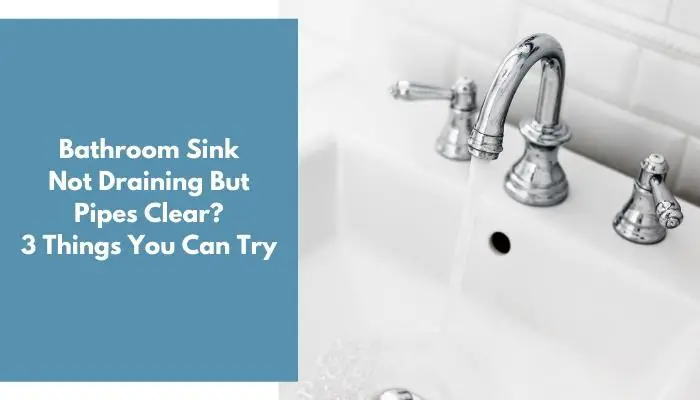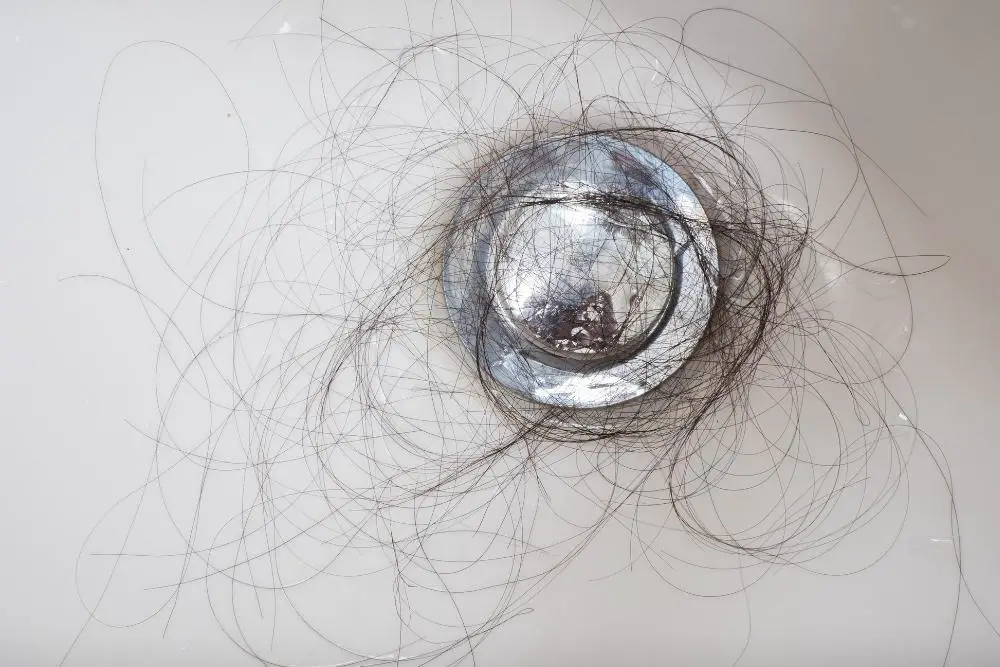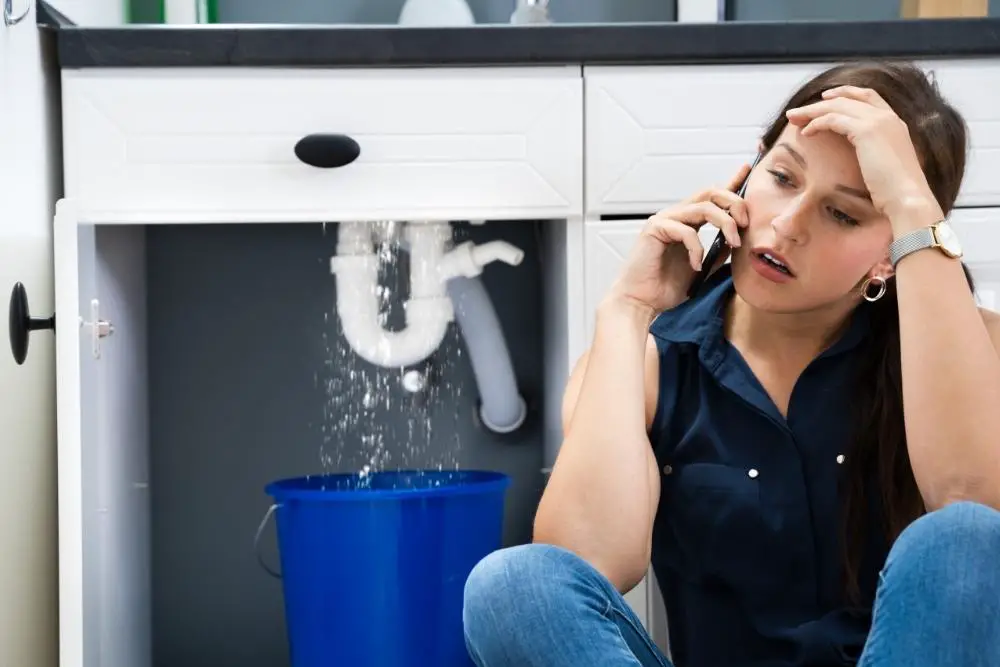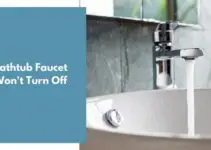Getting rid of a clog in your bathroom is typically tricky, mainly caused by hair, soap scum, and other harmful substances. There are various ways to unclog without resorting to hiring a professional.
When the bathroom sink is not draining, you can look for the sink stopper, pour a homemade or chemical drain cleaner, and unclog the drain trap even if the pipes are clear.
You will learn in this post three things you can try to unclog a bathroom sink that appears unclogged.
Contents
Top 3 Things You Can Try to Unclog Bathroom Sink
Slow draining and blockage are not uncommon in bathrooms. However, some simple steps can help unclog a sink to work correctly.
Inspect the Sink Stopper
Foreign objects can build up in our bathroom sink when you use them to brush your teeth, shave, or wash your clothes. It can lead to a slow draining system.
First, remove the pivot rod using the nuts and screws to remove the block and remove the obstruction. Then, drag the cap using your fingers. You can also use a wire to remove foreign objects. Bend it in a hook to make it easier to remove.
If the thing remains, remove the pivot rod and put the stopper back in place. To check if the clog has been removed, run hot water down the drain. You may also need to check the pivot rod for leaks.
Pour Drain Cleaner
Prices pulled from the Amazon Product Advertising API on:
Product prices and availability are accurate as of the date/time indicated and are subject to change. Any price and availability information displayed on [relevant Amazon Site(s), as applicable] at the time of purchase will apply to the purchase of this product.
If you don’t have a plunger, you can still clear your slow-draining sink with natural and chemical cleaners. Before initiating, make sure that you remove the water. Put a small amount of dish soap in a kettle and boil. Then, pour the mixture down your sink drain.
In a bowl, combine half a cup of baking soda and a cup of vinegar. Then, pour the mixture down the sink drain. For about an hour, let the solution sit for a while. If you don’t have vinegar, you can use baking soda instead.
You can position it in the sink for about ten minutes, but everything else is the same. You’ll need a couple of cups of borax, a couple of cups of vinegar, and a couple of salt spoons. After pouring the mixture down the drain, let it sit for a couple of hours.
You can buy a chemical drain cleaner from a hardware store or online. Before utilizing it, make sure that you read the instructions printed on the bottle.
Unclog the Drain Trap
If the previous steps didn’t work, the drain trap might cause the issue. To find the drainpipe, look under the sink. It’s essential to clean the trap before it gets too unpleasant. First, remove anything that’s inside the pipe. Then, run the water to see if the tube works.
After draining the drain, try to unclog it by bringing out the snake. Make sure to gently push the pipe against the snake to prevent it from creating a clog. Once done, run the water to see if you resolved the issue.
Reasons Why Bathroom Sink Is Clogged
Before resorting to solutions to why your drain is constantly clogged, you need to know its reasons. This way, you can avoid some actions to lessen the probability of getting a clogged drain in the future.
Hair Build-Up
One of the most common reasons bathroom sinks clog is hair. It forms a sticky mess that can clog the pipes when it gets wet.
The more pressure the water exerts on hair, the harder it will eventually form a sticky mess. It causes the hair to collect more wet hair, which then blocks the flow of water inside the pipe.
There’s a myth about hair in drains that says only certain kinds of hair can cause problems. It is not the case, as pet fur and facial hair can also cause clogs.
Even if the hair is thick or fine, it will still catch on the pipe. It is why it’s essential to use a drain-strainer device to prevent hair from forming a sticky mess.
Something Is in P-Trap
The P-trap is a part of the drain pipe located under the sink. It allows the water to drain to the more extensive line leading to the sewer.
P-traps prevent the foul-smelling sewer gas from flowing back into the drain. They bend to catch the water, which helps create the necessary suction for draining.
Sometimes, small objects such as jewelry and other small things can get caught in the p-trap. They can also cause a strange noise when the water flows down the drain.
You can easily remove the P-traps from under the sink using a toothbrush or other cleaning equipment. However, if the P-trap remains, watch out for old, gross water.
Soap Build-Up
You might be surprised to uncover that even household cleaning products can cause clogs in your drains. These products commonly contain chemicals and soap that deposit residues in your sink and pipes.
When soap contains chemicals known to interact with water, soap scum forms, it’s a filmy substance that forms on the pipe walls. Like hair, soap scum can catch itself and other debris in the pipe walls, creating a clog over time. It’s hard to remove because of its sticky nature.
Although soap-related clogs are relatively rare, they can still occur if you use a water softener. Heavy soap particles can also cause clogs to form. They can also damage the pipes and cause corrosion.
Damaged Pipes
Damage to pipes can cause clogs. One of the most common causes is rust build-up on the inner pipe walls. If it gets worse, it can completely block off water flow.
Even the joints of pipes can wear out, which could cause them to sag and block the flow of water. If they aren’t correctly secured, they could shift and become disconnected.
Unfortunately, pipe damage can happen even without being able to avoid it. When old pipes start to break down, the only solution is to replace them with new ones.
If your pipes are not old and you still have problems, it’s time to call in the professionals. They can help you reason out the issue and fix it.
Frequently Asked Questions
Why Is Water Not Draining From My Bathroom Sink?
A variety of issues can cause a bathroom sink not to drain. These include a build-up of debris, hair strands, and soap scum. It would help if you were more careful in your future uses to avoid clogging the pipelines of your bathroom.
You can use changeable filters to prevent hair strands and soap scums from entering the drainpipes.
How Do You Clear a Slow Draining Bathroom Sink?
To clear a slow draining bathroom sink, you can first try to pour a cup of baking soda into the drain and a cup of white vinegar. The mixture will break up slight clogs. Use a small cloth to block the drain for 15 minutes.
If this method still does not work, you can resort to chemical drainpipe liquids to dissolve the cause of the clogging.
Will Coca-Cola Unclog a Drain?
Surprisingly, soda, especially Coca-Cola, can unclog a drain. You probably don’t know that a way to unclog your drains is by pouring a couple of cans of Coke down them. It’s acidic, but it’s far less harsh than most commercial drain cleaners.
You should only do this when you are out of more effective DIY drainpipe cleaners like vinegar and baking soda.
Can Boiling Water Clear a Drain?
Boiling water can clear a drain. That’s a fact. However, you should not do it consistently, especially when your drainpipes are either old or not of the highest quality. Do not use boiling water to unclog a toilet or sink.
It can cause severe damage to the pipes and equipment in your home, and it can also lead to a costly trip to the hardware store.
What Will Dissolve Hair in a Drain?
Store-bought chemical drainpipe liquids and homemade cleaning concoctions can dissolve hair in a drain. First, try baking soda and vinegar before attempting to unclog your drain using other methods. These two simple ingredients can effectively dissolve or remove hair clogs.
And when your DIY hair-dissolving mixture does not work, you can always buy a chemical version of it in the nearby store.
Conclusion
What if the bathroom sink is not draining, but the pipes are clear? You can inspect the sink stopper for possible build-ups, pour homemade or chemical drain cleaners, or unclog the drain pipes. However, if things are not going as planned, you can always contact your trusted plumber to do the work for you.








